114 low relevance results shown for 'Electric'. Prev |1|2|3|4|5 | Next | View 100 per page
Showing low relevance matches only. Return to normal search results
Electrical Circuits - Electrical energy can be transferred and transformed in electrical circuits and can be generated from a range of sources ACSSU219 Year 6 Physical Sciences
Alternative Energies - Energy from a variety of sources can be used to generate electricity ACSCH030 Year 11 Chemical fundamentals
Properties and structure of materials - Ions are atoms or groups of atoms that are electrically charged due to an imbalance in the number of electrons and protons; ions are represented by formulae which include the number of constituent atoms and the charge of the ion (for example, O2, SO42) ACSCH032 Year 11 Chemical fundamentals
Properties and structure of materials - The characteristic properties of metals (for example, malleability, thermal conductivity, electrical conductivity) are explained by modelling metallic bonding as a regular arrangement of positive ions (cations) made stable by electrostatic forces of attra ACSCH108 Year 12 Equilibrium acids and redox reactions
Oxidation and reduction - Galvanic cells, including fuel cells, generate an electrical potential difference from a spontaneous redox reaction; they can be represented as cell diagrams including anode and cathode halfequations ACSPH016 Year 11 Thermal nuclear and electrical physics
Heating processes - Heat transfer occurs between and within systems by conduction, convection and/or radiation ACSPH020 Year 11 Thermal nuclear and electrical physics
Heating processes - Provided a substance does not change state, its temperature change is proportional to the amount of energy added to or removed from the substance; the constant of proportionality describes the heat capacity of the substance ACSPH022 Year 11 Thermal nuclear and electrical physics
Heating processes - Two systems in contact transfer energy between particles so that eventually the systems reach the same temperature; that is, they are in thermal equilibrium ACSPH028 Year 11 Thermal nuclear and electrical physics
Ionising radiation and nuclear reactions - Some nuclides are unstable and spontaneously decay, emitting alpha, beta and/or gamma radiation over time until they become stable nuclides ACSPH029 Year 11 Thermal nuclear and electrical physics
Ionising radiation and nuclear reactions - Each species of radionuclide has a specific halflife ACSPH030 Year 11 Thermal nuclear and electrical physics
Ionising radiation and nuclear reactions - Alpha, beta and gamma radiation have sufficient energy to ionise atoms ACSPH039 Year 11 Thermal nuclear and electrical physics
Electrical circuits - Energy is conserved in the energy transfers and transformations that occur in an electrical circuit ACSPH040 Year 11 Thermal nuclear and electrical physics
Electrical circuits - The energy available to charges moving in an electrical circuit is measured using electric potential difference, which is defined as the change in potential energy per unit charge between two defined points in the circuit ACSPH041 Year 11 Thermal nuclear and electrical physics
Electrical circuits - Energy is required to separate positive and negative charge carriers; charge separation produces an electrical potential difference that can be used to drive current in circuits ACSPH042 Year 11 Thermal nuclear and electrical physics
Electrical circuits - Power is the rate at which energy is transformed by a circuit component; power enables quantitative analysis of energy transformations in the circuit ACSPH043 Year 11 Thermal nuclear and electrical physics
Electrical circuits - Resistance for ohmic and nonohmic components is defined as the ratio of potential difference across the component to the current in the component ACSPH044 Year 11 Thermal nuclear and electrical physics
Electrical circuits - Circuit analysis and design involve calculation of the potential difference across, the current in, and the power supplied to, components in series, parallel and series/parallel circuits ACSPH137 Year 12 Revolutions in modern physics
Quantum theory - A wide range of phenomena, including black body radiation and the photoelectric effect, are explained using the concept of light quanta ACSPH108 Year 12 Gravity and electromagnetism
Electromagnetism - Magnets, magnetic materials, moving charges and currentcarrying wires experience a force in a magnetic field; this force is utilised in DC electric motors ACSPH021 Year 11 Thermal nuclear and electrical physics
Heating processes - Change of state involves internal energy changes to form or break bonds between atoms or molecules; latent heat is the energy required to be added to or removed from a system to change the state of the system ACSCH031 Year 11 Chemical fundamentals
Properties and structure of materials - The properties of ionic compounds (for example, high melting point, brittleness, ability to conduct electricity when liquid or in solution) are explained by modelling ionic bonding as ions arranged in a crystalline lattice structure with forces of attract ACSCH027 Year 11 Chemical fundamentals
Properties and structure of atoms - The type of bonding within substances explains their physical properties, including melting and boiling point, conductivity of both electricity and heat, strength and hardness ACSPH103 Year 12 Gravity and electromagnetism
Electromagnetism - A positively charged body placed in an electric field will experience a force in the direction of the field; the strength of the electric field is defined as the force per unit charge ACSPH104 Year 12 Gravity and electromagnetism
Electromagnetism - Point charges and charged objects produce an electric field in the space that surrounds them; field theory attributes the electrostatic force on a point charge or charged body to the presence of an electric field ACSPH105 Year 12 Gravity and electromagnetism
Electromagnetism - When a charged body moves or is moved from one point to another in an electric field and its potential energy changes, work is done on or by the field
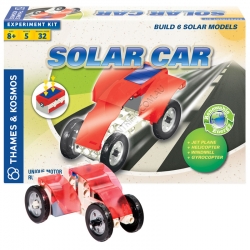
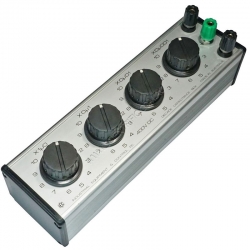
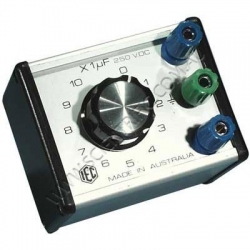
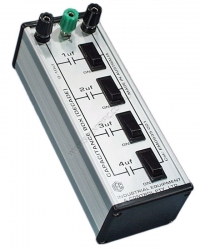
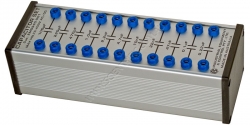
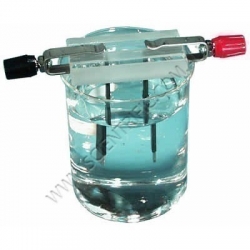
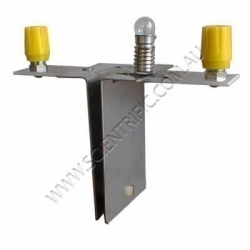
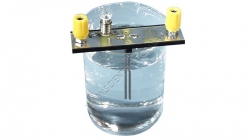
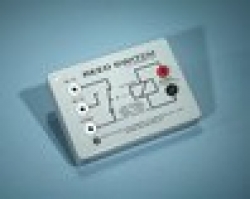
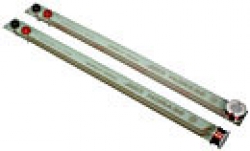


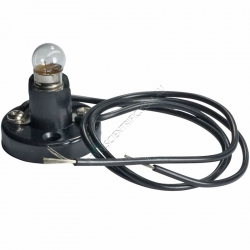
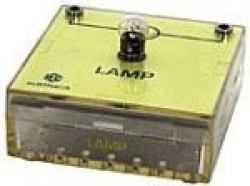
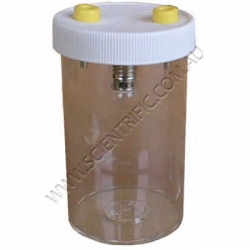
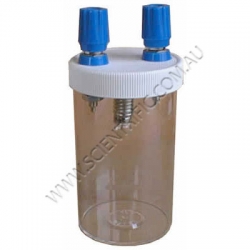
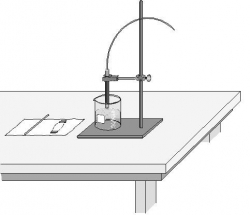
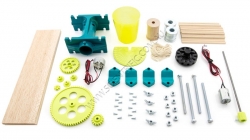
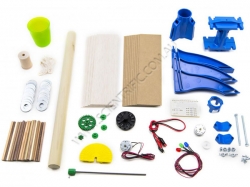
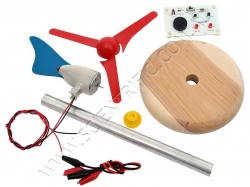

114 low relevance results shown for 'Electric'. Prev |1|2|3|4|5 | Next | View 100 per page
Showing low relevance matches only. Return to normal search results
Curriculum resources related to 'Electric'
ACSSU097 Year 6 Physical SciencesElectrical Circuits - Electrical energy can be transferred and transformed in electrical circuits and can be generated from a range of sources ACSSU219 Year 6 Physical Sciences
Alternative Energies - Energy from a variety of sources can be used to generate electricity ACSCH030 Year 11 Chemical fundamentals
Properties and structure of materials - Ions are atoms or groups of atoms that are electrically charged due to an imbalance in the number of electrons and protons; ions are represented by formulae which include the number of constituent atoms and the charge of the ion (for example, O2, SO42) ACSCH032 Year 11 Chemical fundamentals
Properties and structure of materials - The characteristic properties of metals (for example, malleability, thermal conductivity, electrical conductivity) are explained by modelling metallic bonding as a regular arrangement of positive ions (cations) made stable by electrostatic forces of attra ACSCH108 Year 12 Equilibrium acids and redox reactions
Oxidation and reduction - Galvanic cells, including fuel cells, generate an electrical potential difference from a spontaneous redox reaction; they can be represented as cell diagrams including anode and cathode halfequations ACSPH016 Year 11 Thermal nuclear and electrical physics
Heating processes - Heat transfer occurs between and within systems by conduction, convection and/or radiation ACSPH020 Year 11 Thermal nuclear and electrical physics
Heating processes - Provided a substance does not change state, its temperature change is proportional to the amount of energy added to or removed from the substance; the constant of proportionality describes the heat capacity of the substance ACSPH022 Year 11 Thermal nuclear and electrical physics
Heating processes - Two systems in contact transfer energy between particles so that eventually the systems reach the same temperature; that is, they are in thermal equilibrium ACSPH028 Year 11 Thermal nuclear and electrical physics
Ionising radiation and nuclear reactions - Some nuclides are unstable and spontaneously decay, emitting alpha, beta and/or gamma radiation over time until they become stable nuclides ACSPH029 Year 11 Thermal nuclear and electrical physics
Ionising radiation and nuclear reactions - Each species of radionuclide has a specific halflife ACSPH030 Year 11 Thermal nuclear and electrical physics
Ionising radiation and nuclear reactions - Alpha, beta and gamma radiation have sufficient energy to ionise atoms ACSPH039 Year 11 Thermal nuclear and electrical physics
Electrical circuits - Energy is conserved in the energy transfers and transformations that occur in an electrical circuit ACSPH040 Year 11 Thermal nuclear and electrical physics
Electrical circuits - The energy available to charges moving in an electrical circuit is measured using electric potential difference, which is defined as the change in potential energy per unit charge between two defined points in the circuit ACSPH041 Year 11 Thermal nuclear and electrical physics
Electrical circuits - Energy is required to separate positive and negative charge carriers; charge separation produces an electrical potential difference that can be used to drive current in circuits ACSPH042 Year 11 Thermal nuclear and electrical physics
Electrical circuits - Power is the rate at which energy is transformed by a circuit component; power enables quantitative analysis of energy transformations in the circuit ACSPH043 Year 11 Thermal nuclear and electrical physics
Electrical circuits - Resistance for ohmic and nonohmic components is defined as the ratio of potential difference across the component to the current in the component ACSPH044 Year 11 Thermal nuclear and electrical physics
Electrical circuits - Circuit analysis and design involve calculation of the potential difference across, the current in, and the power supplied to, components in series, parallel and series/parallel circuits ACSPH137 Year 12 Revolutions in modern physics
Quantum theory - A wide range of phenomena, including black body radiation and the photoelectric effect, are explained using the concept of light quanta ACSPH108 Year 12 Gravity and electromagnetism
Electromagnetism - Magnets, magnetic materials, moving charges and currentcarrying wires experience a force in a magnetic field; this force is utilised in DC electric motors ACSPH021 Year 11 Thermal nuclear and electrical physics
Heating processes - Change of state involves internal energy changes to form or break bonds between atoms or molecules; latent heat is the energy required to be added to or removed from a system to change the state of the system ACSCH031 Year 11 Chemical fundamentals
Properties and structure of materials - The properties of ionic compounds (for example, high melting point, brittleness, ability to conduct electricity when liquid or in solution) are explained by modelling ionic bonding as ions arranged in a crystalline lattice structure with forces of attract ACSCH027 Year 11 Chemical fundamentals
Properties and structure of atoms - The type of bonding within substances explains their physical properties, including melting and boiling point, conductivity of both electricity and heat, strength and hardness ACSPH103 Year 12 Gravity and electromagnetism
Electromagnetism - A positively charged body placed in an electric field will experience a force in the direction of the field; the strength of the electric field is defined as the force per unit charge ACSPH104 Year 12 Gravity and electromagnetism
Electromagnetism - Point charges and charged objects produce an electric field in the space that surrounds them; field theory attributes the electrostatic force on a point charge or charged body to the presence of an electric field ACSPH105 Year 12 Gravity and electromagnetism
Electromagnetism - When a charged body moves or is moved from one point to another in an electric field and its potential energy changes, work is done on or by the field
Products related to 'Electric'

Solar Car
SOLAR CAR
Build any one of 5 models including a solar-electric car using an innovative motor module that can be powered by a solar cell or batteries.
Build a race car that drives across the floor, a helicopter with spinning rotor blades, a windmill with spinning turbin...
Order code: 622817
IEC Capacitance Box 0.001uF to 1.111uF 400V DC
IEC CAPACITOR BOX 3 DIAL 1.11µF x 0.001µF 400V DC
IEC Capacitor boxes are used to introduce an adjustable capacitance value into any electrical circuit.
This capacitance box with three rotary switches, provides simple and reliable selection of capacitance to 1.11µF in 0....
Order code: EM0930-001
IEC Capacitance Box 0.01uF to 11.11uF 400V DC
IEC CAPACITOR BOX 3 DIAL 11.1µF x 0.01µF 400V DC
IEC Capacitor boxes are used to introduce an adjustable capacitance value into any electrical circuit.
This capacitance box with three rotary switches, provides simple and reliable selection of capacitance to 11.1µF in 0.0...
Order code: EM0931-001

IEC Capacitance Box 0.001uF to 11.111uF 400V DC
IEC CAPACITOR BOX 4 DIAL 11.11µF x 0.001µF 400V DC
IEC Capacitor boxes are used to introduce an adjustable capacitance value into any electrical circuit.
This capacitance box with four rotary switches, provides simple and reliable selection of capacitance to 11.11µF in 0...
Order code: EM0932-001

IEC Capacitance Box 1uF to 10uf 400V DC
IEC CAPACITANCE BOX 1 DIAL 10µF x 1.0µF 250V DC
IEC Capacitor boxes are used to introduce an adjustable capacitance value into any electrical circuit.
This rotary switched capacitance box provides simple and reliable selection of capacitance from 1µF to 10µF in 1µF steps...
Order code: EM0935-001

IEC Capacitance Box 1uF to 10uF 250V DC
Discontinued - only 4 in stock
IEC CAPACITANCE BOX 4 SWITCH 10x1.0µF 250V
IEC Capacitor boxes are used to introduce an adjustable capacitance value into any electrical circuit.
This capacitance box with four rocker switches provides simple and reliable selection of capacitance from 1µF to 10µF in 1µF ...
Order code: EM0935-002
IEC Capacitor Air Aepinus 200x283mm square adjustable 2 to 250pF
IEC CAPACITOR AIR AEPINUS 200mm AND 283mm SQUARE ADJUSTABLE 2-250pF
The IEC Aepinus Air Capacitor is used to study the theory of capacitance and charge whilst using air as the insulation medium. The charge stored in a capacitor depends on the area of the capacitor plates,...
Order code: EM0938-001

IEC Capacitor Set Of 11 100pF To 0.47uF
IEC CAPACITOR SET ELEVEN STEP 100pF TO 0.47µF
Used to introduce a selected capacitance into any electrical circuit, this set of 11 capacitors without switches is mounted in a strong, compact metal housing. The high quality 250V DC capacitors are soldered directly onto 4mm...
Order code: EM0940-001

IEC Electrodes Stainless Steel Adjustable Plate
IEC STAINLESS STEEL ADJUSTABLE PLATE ELECTRODES
This adjustable stainless steel plate electrode set is self contained and can be rested directly over the rim of a small beaker for studies in electrical conductivity in liquids. The 75mm long plates are insulated except for...
Order code: EM1790-001

IEC Electrodes Stainless Steel Plates Fixed Lamp
IEC STAINLESS STEEL FIXED PLATE ELECTRODES
This stainless steel fixed plate electrode set is self contained and can be rested directly over the rim of a small beaker for studies in electrical conductivity in liquids. The 50mm wide x 75mm long plates are fixed at a separat...
Order code: EM1791-001

IEC Electrodes Stainless Steel Rods Fixed Lamp
IEC STAINLESS STEEL FIXED ROD ELECTRODES
This stainless steel fixed rod electrode set is self contained and can fit inside a 10mm diameter test tube for studies in electrical conductivity in liquids. The 2mm diameter x 60mm long stainless steel rods are fixed at a separa...
Order code: EM1792-001
IEC Electrodes Stainless Steel 2 Rods Fixed Lamp and Flex Lead
IEC STAINLESS STEEL FIXED ROD ELECTRODES WITH CABLES
This stainless steel fixed rod electrode set is self contained and can fit inside a 10mm diameter test tube for studies in electrical conductivity in liquids. The 2mm diameter x 60mm long stainless steel rods are fixed...
Order code: EM1792-101

IEC Reed Switch in Housing with 4mm Sockets
IEC REED SWITCH IN HOUSING WITH SOCKETS
A Reed Switch is used to switch a circuit by an electrical signal from a different circuit (the same function as a relay). The two circuits are not electrically connected.
A reed switch can switch very rapidly and repetitively. I...
Order code: EM2800-001

IEC Search Coil for Magnetic Experiments Axial Winding
IEC SEARCH COIL FOR MAGNETIC EXPERIMENTS AXIAL WINDING
A search coil is used to measure field strengths and flux densities between the poles of electromagnets. Either an oscilloscope is connected to measure the induced voltages or AC or DC currents are passed through the ...
Order code: EM3744-001

IEC Search Coil for Magnetic Experiments Lateral Winding
IEC SEARCH COIL FOR MAGNETIC EXPERIMENTS LATERAL WINDING
A search coil is used to measure field strengths and flux densities between the poles of electromagnets. Either an oscilloscope is connected to measure the induced voltages or AC or DC currents are passed through th...
Order code: EM3745-001

Vernier Go Wireless Heart Rate - Data Logger
Currently unavailable, we are awaiting confirmation it complies with Button Battery safety requirements.
VERNIER GO WIRELESS HEART RATE The Vernier Go Wireless Heart Rate is a pair of wireless hand grips that transmit heart rate onto a mobile device. Heart rate is measured by registering the small electrical signals carried across the surface of the skin each time the heart ... Order code: GW-HR
VERNIER GO WIRELESS HEART RATE The Vernier Go Wireless Heart Rate is a pair of wireless hand grips that transmit heart rate onto a mobile device. Heart rate is measured by registering the small electrical signals carried across the surface of the skin each time the heart ... Order code: GW-HR

IEC Light Source 2 Wires 2.5V MES
IEC LIGHT SOURCE 2.5V MES LOW POWER WITH 2 WIRES
A simple light source used in the teaching of basic electricity. This small light source uses a 2.5V MES (Miniature Edison Screw) torch globe in a small plastic base with two wires permanently connected.
Order code: HL2010-001

IEC Light Source 4mm Socket 2.5V MES
IEC LIGHT SOURCE 2.5V MES LOW POWER WITH SOCKETS
A simple but high quality light source used in the teaching of basic electricity. This small light source uses a 2.5V MES (Miniature Edison Screw) torch globe in a square plastic base with two 4mm sockets for connection....
Order code: HL2011-001

IEC Light Source Enclosed 4mm Socket 2.5V MES
IEC LIGHT SOURCE 2.5V MES LOW POWER ENCLOSED WITH SOCKETS
A simple light source housed in a protective transparent plastic vial for use in the teaching of basic electricity.
There are two versions of this light source.
HL2012-001 has 4mm sockets for connection and
...
Order code: HL2012-001

IEC Light Source Enclosed 4mm Term 2.5V MES
IEC LIGHT SOURCE 2.5V MES LOW POWER ENCLOSED WITH TERMINALS
A simple light source housed in a protective transparent plastic vial for use in the teaching of basic electricity.
There are two versions of this light source.
HL2012-001 has 4mm sockets for connection and ...
Order code: HL2012-101

Key Experiment Diffusion through Membranes
The rate of diffusion of a salt solution through a membrane is investigated under different conditions of concentration.
Description
KEBS4A provides the tools for data collection that will enable investigation of rates of diffusion through a membrane under different co...
Order code: KEBS4A

KidWind Advanced Wind Experiment Kit Nacelle
KIDWIND ADVANCED WIND EXPERIMENT KIT NACELLE
This kit contains the unassembled parts of the Advanced Wind Turbine Nacelle. Build your own wind turbine and experiment with wind power.
This kit enables a number of advanced experiments, especially with GENPack generator m...
Order code: KW-AWXN

KidWind Basic Wind Experiment Classroom Pack
KIDWIND BASIC WIND EXPERIMENT CLASSROOM PACK
The classroom pack option includes three turbine towers and bases, three nacelles, three generators, eight hubs and blade consumables for eight groups of 24 students.
Explore wind energy affordably and easily. This kit, on...
Order code: KW-BWXC

KidWind Mini Wind Turbine
KIDWIND MINI WIND TURBINE
Demonstrate the power of the wind with an affordable and rugged wind turbine. This is an easy-to-build turbine that will light an LED bulb and play a tune. The highly efficient blades will produce plenty of power in a slight breeze.
With th...
Order code: KW-MWT


KidWind Mini Wind Turbine With Blade Design
KIDWIND MINI WIND TURBINE WITH BLADE DESIGN
The MINI Wind Turbine with Blade Design allows students to perform experiments using a desktop fan to demonstrate the power of the wind. This is an affordable, rugged and easy-to-build turbine that will light a LED bulb or play ...
Order code: KW-MWTBD
114 low relevance results shown for 'Electric'. Prev |1|2|3|4|5 | Next | View 100 per page



 ,
,